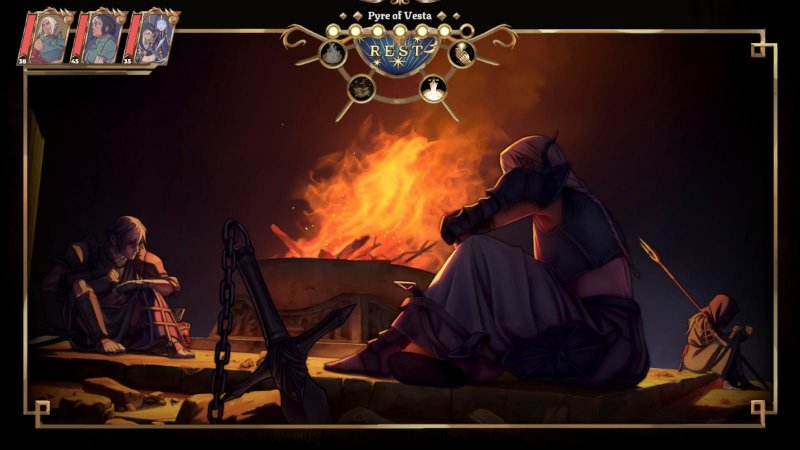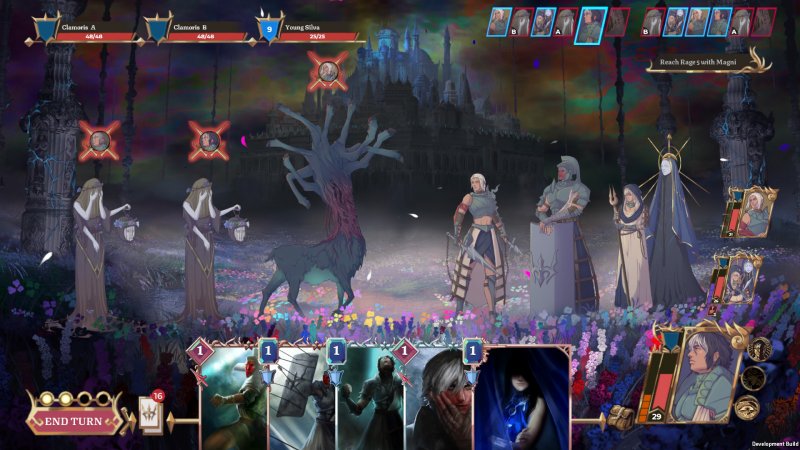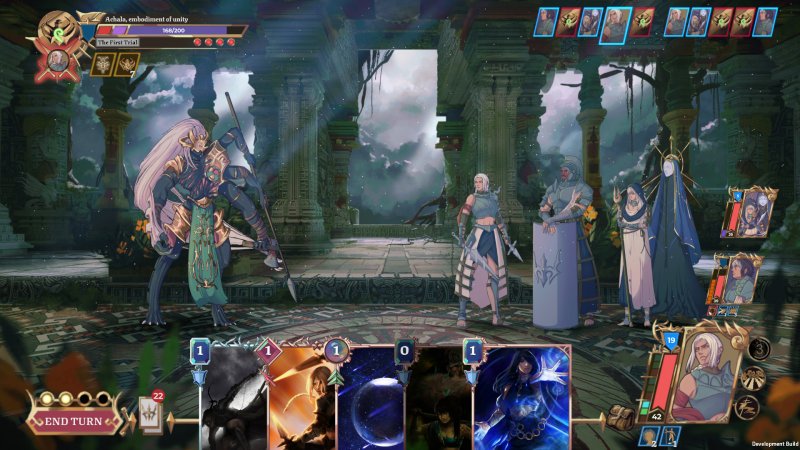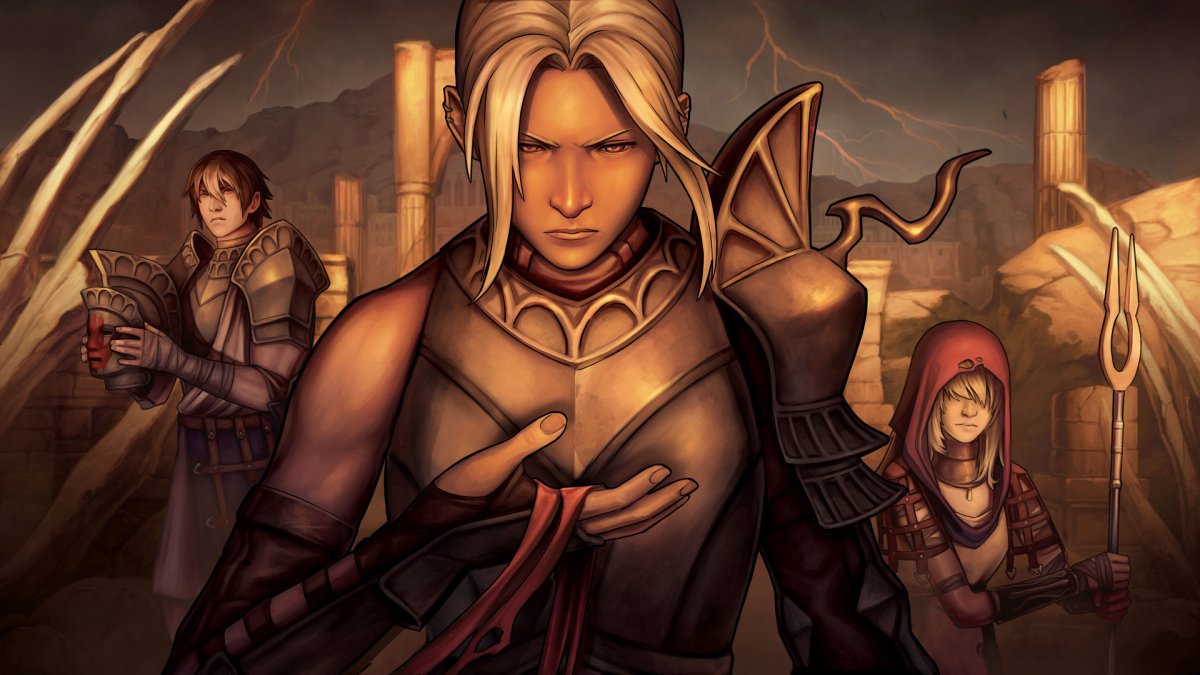Is there room in the world of video games for another fantasy card game with roguelike elements? The genre is very popular with gamers, especially PC, either because of the possibilities it offers in terms of gameplay or the presence of a strong randomness that forces them to adapt their tactics from time to time. Creating and dealing with your deck, examining all possible combinations, discovering the best and worst, getting new cards that unlock new strategies, even the complete opposite of what has been practiced so far, are just a few of the pleasures that can be enjoyed. I felt in front of a well made deck builder.
So we have I tried Shattered Heaven With certain expectations in mind and it must be said we were not disappointed.
storytelling

What was clear from the very beginning is that Shattered Heaven has a strong influence. narrative trace. The demo we got to play allowed us to try out the first episode, which talks about a nameless world where groups fight for the few available resources, and break the curse that calls for death for everyone at forty. Therefore, the three heroes must take part in the so-called Battle of Ascension to perform an ancient blood ritual, the only one who can get them out of the hell they’re in.
It should be noted that in Shattered Heaven History it is not just the background of the action, it is also an integral part of it and is very present: the characters are constantly talking to each other, communicating with non-player characters, from whom they learn about the mythology of the game. This helps one to better understand and enrich the context, missions and recommendations, and to make choices that determine the evolution of particular events. Let’s not go into too much detail because we were only able to try a part of the whole, but know that you spend a lot of time reading (unless you’re a fan of the skip button…but it would be a shame) .
What we really care about is that you understand that storytelling is very present in every aspect of the game. It’s also inside dungeons that, though randomly generated, always offer new situations that offer small events to participate in and enable plot development, including new characters. Therefore, the feeling of being part of a larger story, not just playing cards, is always very present and makes the progression much more interesting than other games. Of course, the main focus of the game is the cards that represent the essence of the action.
game system

this game system seemed versatile to us. As mentioned, dungeons consist of boxes that can be empty or contain events, support areas for characters (for example, bonfires allow you to heal yourself and manage the decks of heroes), loot, or encounters with enemies. In the latter case, our three heroes, Andora, a warrior dedicated to attacking, Magni, a knight specializing in defense, and Ishana, the perfect summoner to support the other two, are deployed similarly to what happened in Slay the Spire. Cards that are then drawn from the deck must be played in turns to produce different effects, such as damaging opponents, increasing the party’s defense, or summoning creatures. Each card has a color and requires spending a certain number of action points to play. Generally, the more points needed, the stronger the effects of the card. Cards can be passed in a variety of ways, as the genre dictates. For example, if you play after using a card of a certain suit, some cards become stronger or others change effects depending on the character using them. There’s a lot of variety overall and the fights seem well-balanced.

While always central to balancing offense and defense, the system as a whole offers a wide variety of viable tactics. We’ll see how it develops in the long run, i.e. whether it continues when other chapters are ready. There difficulty dungeons seem to have been somewhat scrutinized: the first dungeons do not present great challenges and allow you to immerse yourself in various game functions, including handling, with the first central area where you start your adventure. skills, assigning points to develop new powers, using items in dungeons to get some help (e.g. removing penalties or allowing traps to be neutralized) as well as creating or purchasing items. But after a few sorties, things get complicated: The monsters you encounter get stronger, things get more insidious, and you start to die more often. Of course, a lot depends on how the deck is built and how the available resources are managed, but some defeats are inevitable. However, the challenge seemed right to us, and the hope is that it will remain so even when all content is available.
dark fantasy

from perspective technical and stylisticThe Shattered Heaven looks clean and well done. The 2D graphics are well designed and follow a single vision that makes all elements compact which creates a certain continuity even though they are very different from each other. We are dealing with a dark fantasy work dominated by dramatic overtones, as underlined by the highly evocative soundtrack that can rely on beautiful illustrations for cards and well-designed environments, if not so much (at least in the demo). The characters and enemies offer interesting design, including deer with heads and legs, floating creatures with four arms, and a variety of companions. A visual novel solution was chosen instead for the dialogue sequences, so characters whose lines change in a box at the bottom of the screen are placed in the foreground. The overall impression is very positive, but this is certainly not the right situation to make firm conclusions. For those of you who need to wait to try the final version, or at least the one that will be released on Steam Early Access on October 13, 2022.
DOCUMENTS
- Well thought out game system
- Important narrative part
- Will the balances improve in the upcoming episodes?
Source: Multiplayer

